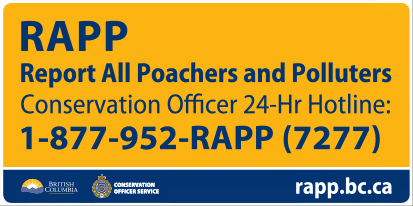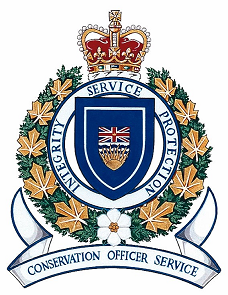What can you do?
Practice Clean, Drain, and Dry
As a preventative measure all watercraft launching into B.C. waters are encouraged to follow the clean, drain, dry approach to prevent the spread of aquatic invasive species in B.C. Inspect, clean, drain and dry all gear and boats following use. When leaving a waterbody, remove any visible plants and animals from your gear and boat.
Clean: thoroughly inspect boat (hull, drive units, trim plates, transducers), trailer and components (rollers, bunk boards, axles, etc.), equipment (i.e., water pumps, hatchery equipment, siphons, nets, ropes, traps, etc.) and remove any mud, dirt, plants or aquatic species. Some aquatic invasive species are very small such as New Zealand mud snails and can be found in small amounts of mud or dirt. Pay attention to hidden, hard to reach areas, gaps, crevices, holes and other inconspicuous places (i.e., around the motor housing, trim tabs, and water intake screens, or pump fittings).
Drain: whenever possible, areas that hold water should be drained so there is no standing water. Eliminate water from any conceivable item before you leave the visiting area. This includes live wells, bilges, cargo areas, pipes, water pumps, etc.
Dry: dry all areas of the vessel that may have gotten wet. Drying boats, gear and equipment will help to minimize risk of contamination.
If possible, avoid launching a watercraft into more than one waterbody per day (depending on weather conditions) to allow time for boat and gear to dry. The use of felt-soled waders is strongly discouraged, as they are a major pathway for the dispersal of aquatic hitchhikers, and particularly difficult to disinfect. Rubber-soled alternatives are available on the market, and provide the same non-slip qualities, but are much easier to clean.
Clean, Drain, and Dry vs. Decontamination:
Clean, Drain, and Dry is a preventative step that all boaters should practice when moving any watercraft or water equipment between waterbodies to prevent the spread of aquatic invasive species. This includes boats that are just moving between lakes in BC to prevent the spread of species already present in some lakes but not others such as Eurasian watermilfoil.
Decontamination is applied when there is an identified risk that a conveyance (either watercraft or water equipment) may be transporting AIS. The Provincial auxiliary conservation officers are trained at identifying and treating the risk of transporting AIS through specified decontamination procedures. For zebra and quagga mussels decontamination procedures involve hot water with specific contact times to kill the mussels and high pressure to remove them.
Report Invasive Mussels
Any suspected, transport, possession, sale or release of invasive mussels should be reported immediately to the Conservation Officer Services Report All Poachers and Polluters: 1-877-952-7277 (RAPP).

Report Invasive Species
- Any invasive species sightings in B.C. should be reported using the Report-Invasives B.C. apps for iPhone and iPad or Android.
- Learn more about other terrestrial and aquatic invasive species
- Learn more about whirling disease


